El pasado 31 de marzo concluyeron los grupos de trabajo online “El reto de la enseñanza online en el aula de idiomas” y “Creativity in the English Class”.
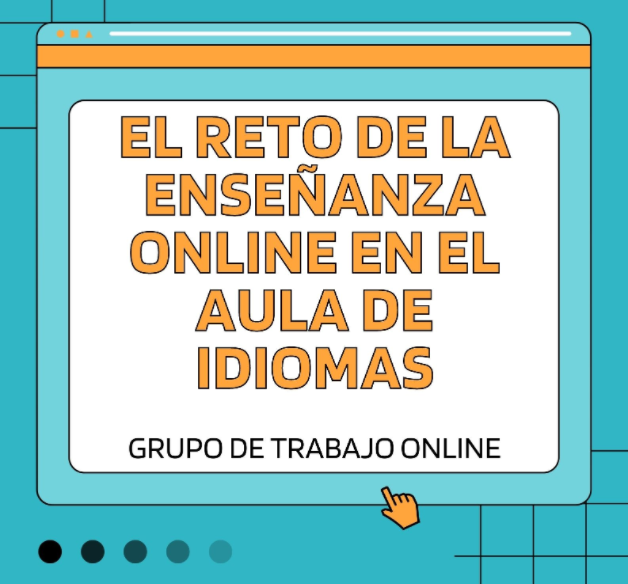
“El reto de la enseñanza online en el aula de idiomas” ha estado coordinado por Silvia Valenciaga, profesora del CEIP Diego Laínez de Almazán, Soria, experta en herramientas didácticas y de evaluación online y han participado 53 profesores de diferentes niveles educativos e idiomas de Castilla y León que han compartido durante estos meses gran cantidad de recursos. Ha sido todo un éxito y las valoraciones han sido excepcionales. En el siguiente video, elaborado por Silvia, podéis ver un resumen de todo lo trabajado, compartido y aprendido.
“Creativity in the English class” surgió de los dos cursos por videoconferencia desarrollados en los meses de septiembre y octubre de 2021: “Creativity in the Infant and Primary English Class” y “Creativity in the Secondary English Class”. Aquellos asistentes que quisieron seguir formándose en este tema, se inscribieron después en este grupo de trabajo donde se han compartido multitud de recursos, ideas y actividades creativas. Han participado un total de 160 profesores de inglés de diferentes niveles educativos muy satisfechos con la formación recibida y el aprendizaje adquirido.
Fruto de todo este trabajo, se han creado 2 blogs llenos de recursos, herramientas didácticas y de evaluación online, ideas y actividades para profesores de idiomas que servirán como banco de recursos para todos aquellos profesores del mundo que quieran consultarlos.
| Etiquetas: | idiomas innovación inglés formación english creatividad creativity |
El pasado mes de octubre tuvo lugar el curso por videoconferencia “Creativity in the Secondary English Class” en el Centro de Formación del Profesorado en Idiomas.
El curso se dividió en dos sesiones los días 13 y 26 de octubre y tuvo una inscripción de 229 profesores de inglés de Secundaria y Escuela de Idiomas de las 9 provincias de Castilla y León.
La ponente fue Kristina Smith desde Cambridge. Kristina es una experta formadora de profesores que cuenta con una extensa experiencia desde hace más de 30 años y que imparte formación a docentes de todos los países del mundo.
En sus presentaciones, Kristina habló sobre qué es la creatividad, y facilitó a los profesores herramientas para motivar al alumnado en el aprendizaje del idioma y muchas actividades diferentes que desarrollan la creatividad tanto del profesorado como del alumnado y fomentan la compresión y expresión orales y escritas.
Las valoraciones han sido muy buenas y en general la formación ha resultado muy satisfactoria, destacando el gran trabajo llevado a cabo por la ponente.
A partir de este curso y del curso para profesores de Primaria, se ha creado un grupo de trabajo donde los docentes de todos los niveles educativos van a compartir sus experiencias, ideas, herramientas y actividades creativas. Será un lugar de aprendizaje mutuo que seguro terminará de completar y enriquecer todo lo aprendido en los dos cursos por videoconferencia.
Además, hemos elaborado un blog marco de los cursos donde todo el profesorado que lo desee podrá ver las presentaciones de Kristina Smith, todo lo compartido durante las sesiones de formación, así como todo lo que los profesores integrantes del grupo de trabajo vayan compartiendo y aportando.
https://creativitycfpidiomas.blogspot.com/search/label/SECONDARY
Por último, quisiera dar las gracias a Kristina Smith y a los profesores participantes en el curso que han sido muy comprensivos con el cambio de fecha de la segunda sesión y que han aportado gran cantidad de ideas y recursos en el chat durante el desarrollo de las dos sesiones llevadas a cabo.
Gracias también a los profesores que han querido seguir formándose con nosotros siendo parte del grupo de trabajo que acaba de empezar y que estoy segura va a enriquecer mucho su trabajo y el aprendizaje de sus alumnos.
Let’s be creative all together!
| Etiquetas: | idiomas innovación inglés formación english creatividad creativity |
Teacher trainer expert Paul Seligson defines efficient group manament as "creating the best possible conditions to foster learning opportunities for each and every member of the class", which involves balancing the needs of the individual with the needs of the group.
He shared his wide experience as teacher of English and teacher trainer with 229 Castilla y León colleagues of English and non linguistic subjects on the 28th September and 6th October.
Along this course the participants were involved in a big quantity of strategies and techniques which covered these objectives:
1. To consider the most important elements in classroom management
2. To efficiently use pair & group work
3. To use classroom routines & activities as management tools
4. To reflect about when & how use the mother tongue
5. To understand management as creating the best possible conditions to foster learning opportunities for each / every member of a class.
Along both sessions the teachers participated very actively in the activities proposed by the speaker and shared their own tips in the chat.
A selection of the application tasks designed by these participants has been posted on the blog of the course and in in CROL http://www.educa.jcyl.es/crol/es .
https://positiveclassroommanagementcfpi.blogspot.com/.
This tool is an additional bank of ready-to-use techniques which have been tested and recommended by their peers.
This course has been very highly praised by the Primary, Secondary and EOI participants in the assessment of the course due to the expertise of Paul Seligson and the quality of the materiales and strategies proposed.
| Etiquetas: | innovación inglés formación english |
El pasado mes de septiembre tuvo lugar el primer curso por videoconferencia del curso escolar 2021-2022 en el Centro de Formación del Profesorado en Idiomas.
El curso “Creativity in the Infant and Primary English Class” se dividió en dos sesiones los días 23 y 30 de septiembre y tuvo una inscripción de 173 profesores de inglés y asignaturas bilingües de Infantil y Primaria de las 9 provincias de Castilla y León.

La ponente fue Kristina Smith desde Cambridge. Kristina es una experta formadora de profesores que cuenta con una extensa experiencia desde hace más de 30 años y que imparte formación a docentes de todos los países del mundo.
En sus presentaciones, Kristina habló sobre la creatividad en el aula, incluyendo distintas herramientas para motivar al alumnado en el aprendizaje del idioma, distribución de tiempos y espacio (aula) así como diferentes actividades que desarrollan la creatividad tanto del profesorado como del alumnado.
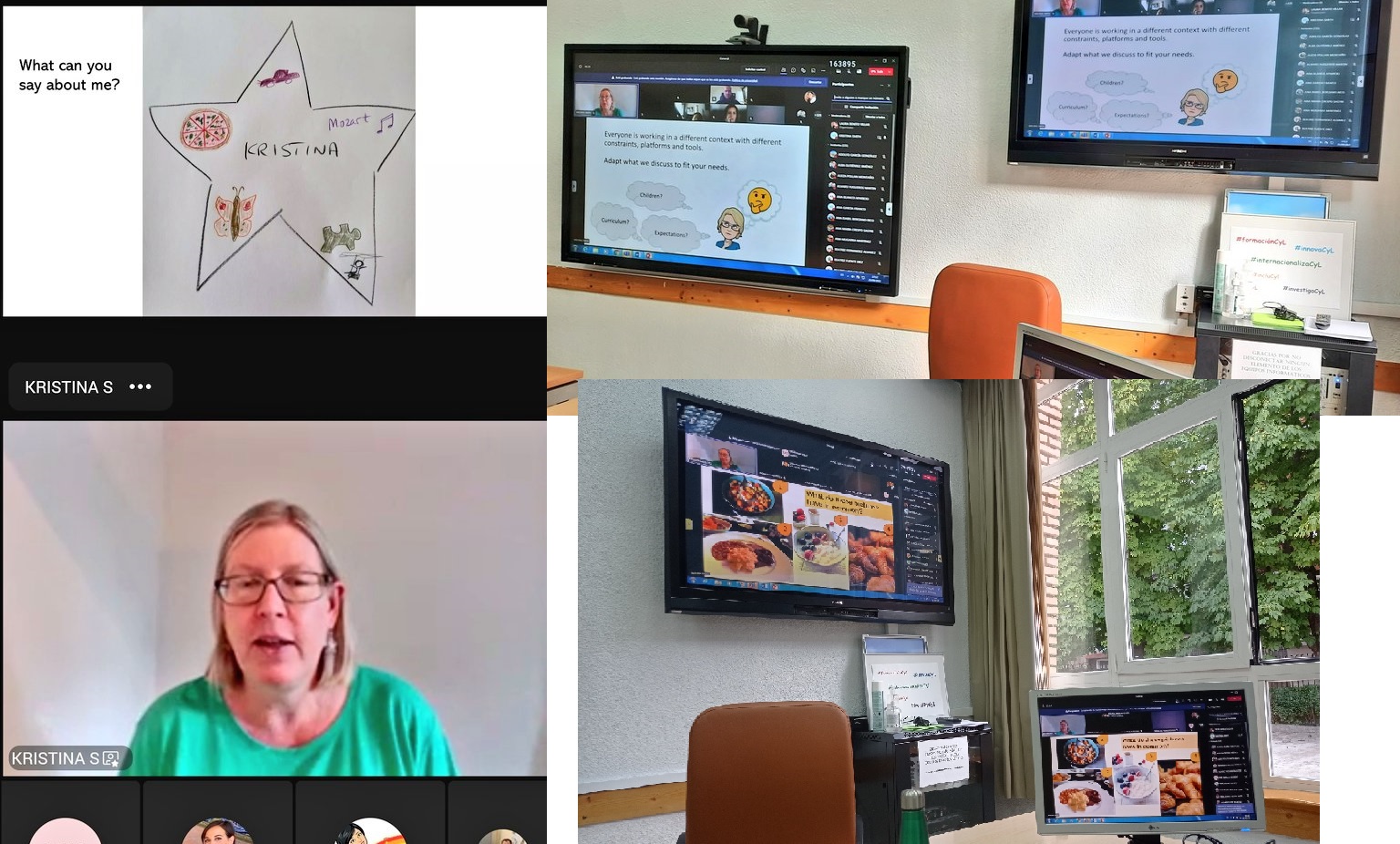
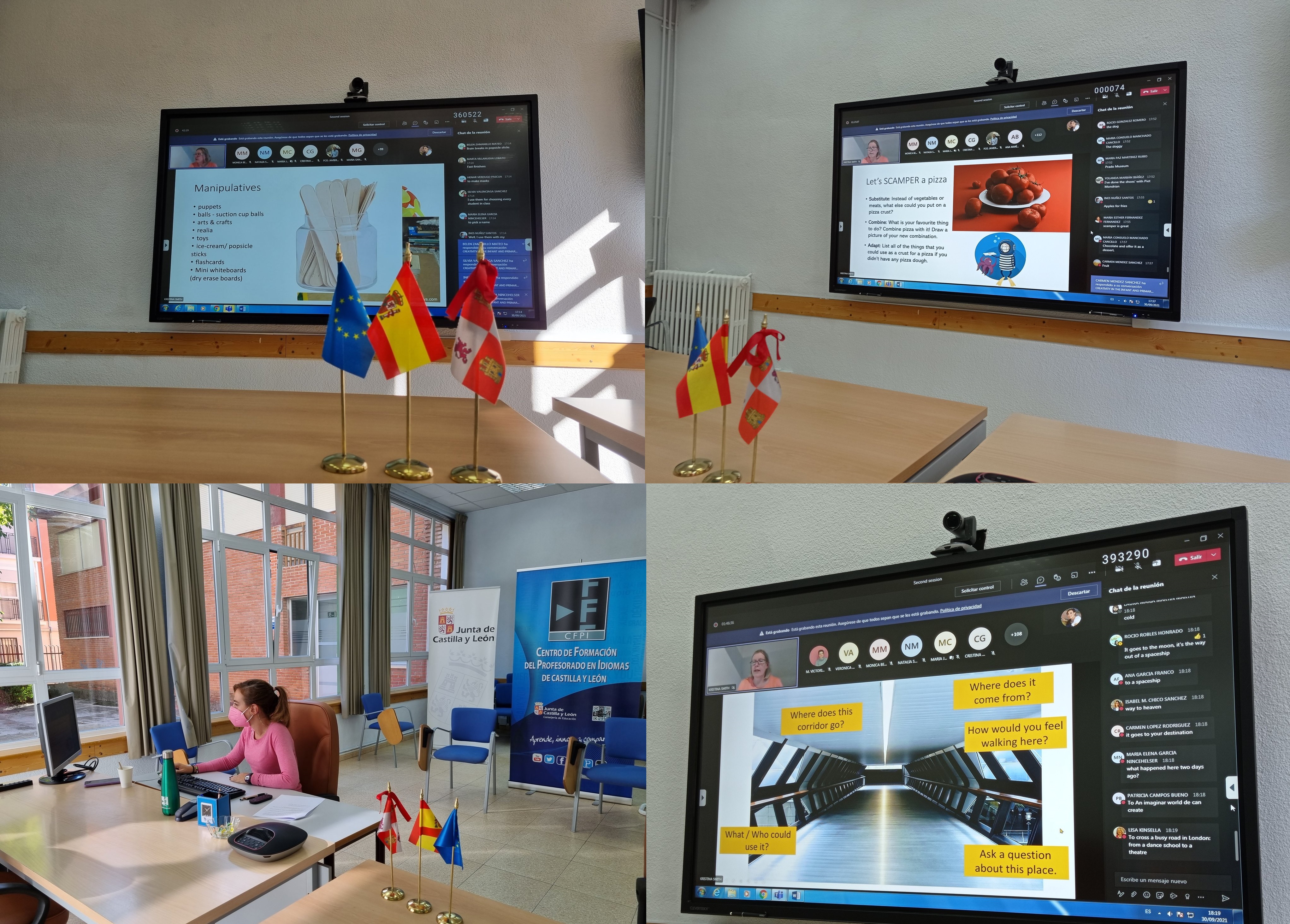
La formación ha obtenido muy buenas valoraciones y comentarios y ha resultado muy satisfactoria tanto para mí como coordinadora del curso desde el CFP Idiomas como para los profesores participantes y para la propia ponente.
A partir de este curso y del curso que se está ahora desarrollando sobre la misma temática, pero para profesores de Secundaria, se abrirá un grupo de trabajo el próximo 18 de noviembre donde los docentes de todos los niveles educativos podrán compartir sus experiencias, ideas, herramientas y actividades creativas. Será un lugar de aprendizaje mutuo que seguro terminará de completar y enriquecer todo lo aprendido en los dos cursos por videoconferencia.
Además, hemos elaborado un blog marco de los cursos donde todo el profesorado que lo desee podrá ver las presentaciones de Kristina Smith, todo lo compartido durante las sesiones de formación, así como todo lo que los profesores integrantes del grupo de trabajo vayan compartiendo y aportando.
https://creativitycfpidiomas.blogspot.com/search/label/INFANT%20AND%20PRIMARY
Motivating activities = motivated students
Let’s be creative!
Laura Benito Villar
| Etiquetas: | idiomas innovación inglés formación english creatividad creativity |
Triggering Activities for the Online Learning Environment was a videoconference course held form the CFP en Idiomas which took place on the 11th and the 18th of May.
Petrina Moir, expert teacher of English and teacher trainer, guided the 167 participants through the objectives of the course:
1. To provide resources and methodological approaches to promote the acquisition of receptive and productive skills
2. To recall motivational methodological approaches adapted to the circumstances and context of our students.
3. To learn how to effectively integrate technology in the classroom and ultimately reach the students and empower them to be active participants in their own learning
The first session of the course was dedicated to the oral skills: speaking and listening. Petrina Moir explained how to make the best of the tools, introducing new applications and ways to use them.
The content of the second session dealt with reading, writing and assessement, introducing different apps and tools aimed to make students get hold of them in an active way.
Along both sessions the teachers participated very actively in the chat and in the padlets that Petrina opened to share their comments, ideas and resources.
https://es.padlet.com/tmoirwh/i6gitbtymrhauj0r
The participants are currently teaching in Infant, Primary, Secondary, Adult Education, Escuela Oficial de Idiomas, and Vocational Studies. This variety has given the course a wide variety of points of view shared in the chat as the sessions took place and classroom activities designed by them after the course. These are being upladed to the blog of the course along with the speaker's presentations.
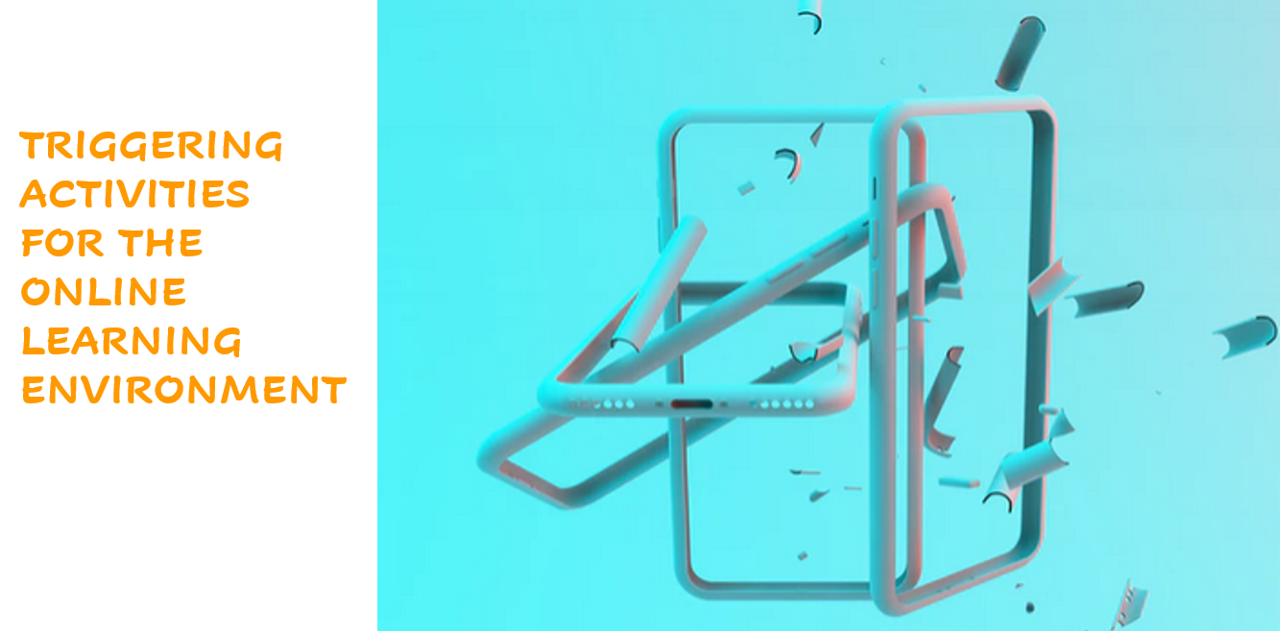
https://triggeringonlineactivitescfpi.blogspot.com/
Las valoraciones de los profesores tras el curso han acentuado precisamente la riqueza del intercambio entre distintos niveles y el interés del curso a nivel de contendios y su aplicabilidad al aula.
| Etiquetas: | idiomas inglés english formación innovación |
This videoconference course took place on the 2nd and 4th of March 2021 and it was held by Art scholar and English teacher trainer Catherine Park. This training activity was attended by 160 teachers in Castilla y León interested in embedding Visual Arts in their lessons.
Five main objectives were developed in both sessions with the help of the teachers, who participated very actively in the chat.
Objective 1: To offer and insight into how art can be used in the classroom.
The teachers began by sharing their favourite works of art in a padlet: https://padlet.com/admin2118/Bookmarks which has work as the course own Gallery Art.
Objective 2: To teach English through art from basic vocabulary to complex grammatical structures.
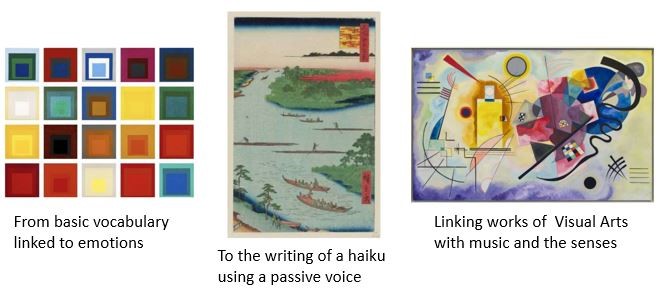
Objective 3: To reflect on how they can choose and adapt images to their teaching objectives.
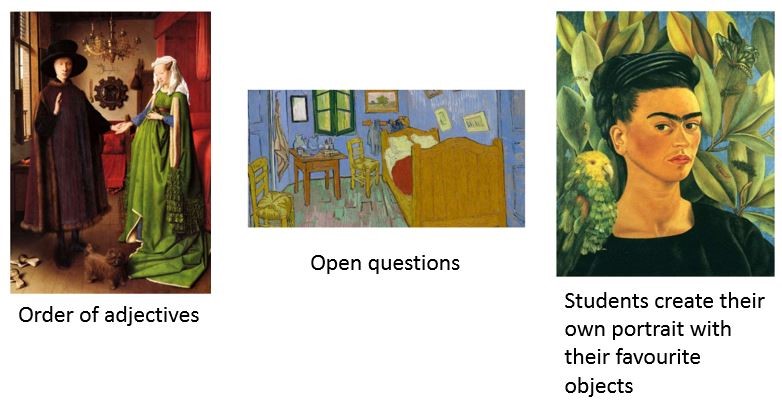
Objective 4: To provide productive activities and ideas so that the learners are completely involved in the experience.

Objective 5: To motivate teachers and students to learn and enjoy works of art through the English language, by addressing key topics.
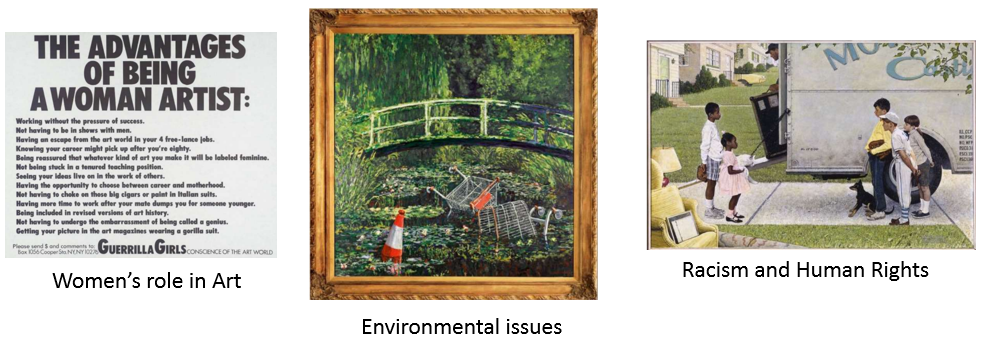
Although the course was mainly aimed to Secondary teachers of English, there were also teachers of Social Sciences, Visual Arts, Music, Technology, Vocational Studies and a few Primary Teachers attending to the course. This variety of subjects has enriched enormously the variety of activities designed as well as the skills, resources and the cross-curricular possibilities.
These ready-to-make activities designed by the teachers are uploaded in the blog of the course: https://artenglishcfpi.blogspot.com/ where you can also see the padlet mentioned above.
The participants have highly valued the course contents and the resources provided (also in the blog). Language teachers and those teaching their subject in English are very much interested in using cultural aspects in their lessons, not as an accessory, but as essentials components of the learning experience.
| Etiquetas: | idiomas innovación inglés formación english |
Harriet Thomson, expert CLIL and English teacher and teacher trainer, was the speaker of this course followed by 117 bilingual teachers in Castilla y León. It took place on the 11th and 18 of February 2010 by videoconfence.
Teaching a non-linguistic subject in English provides an ideal opportunity to exploit the language that occurs naturally in this context. It is important to maximise exposure by using the target language in class as much as possible, and the most natural and authentic use of the English through positive classroom management.
In order to achieve these objectives during the course Harriet Thomson went through these contents along both sessions:
The planning of the lessons includes an effective use of everyday language for routines and personal interaction with the learners and among themselves. A conscious and motivational “linguistical interaction” encourages communication above linguistic accuracy, even in no so comfortable situations, such as the many examples the participants of the course went through.
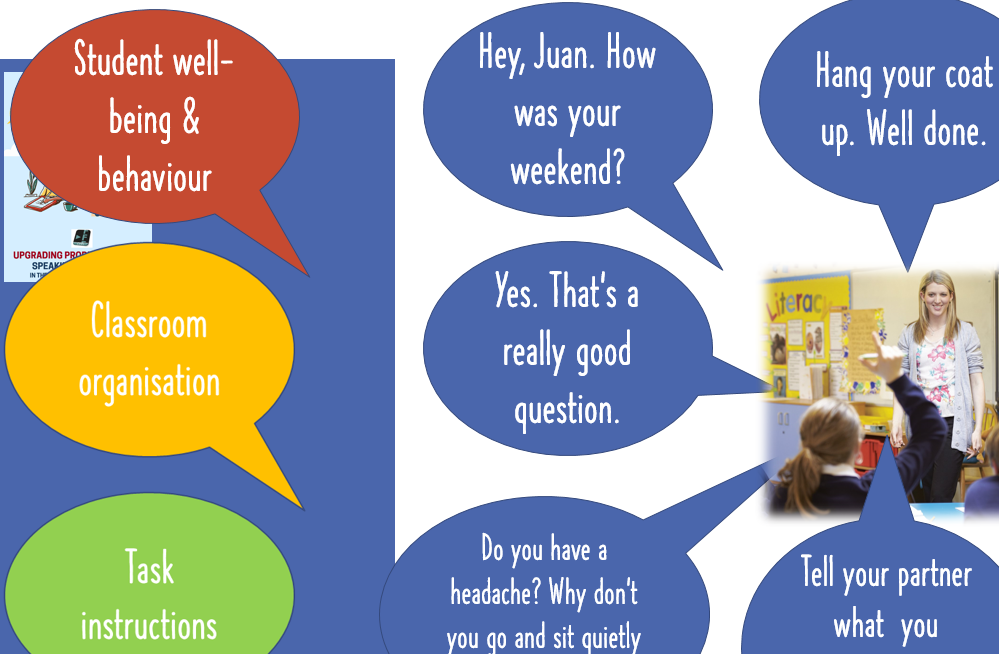
The speaker invited the teachers to reflect about these key issues before planning their lesson:
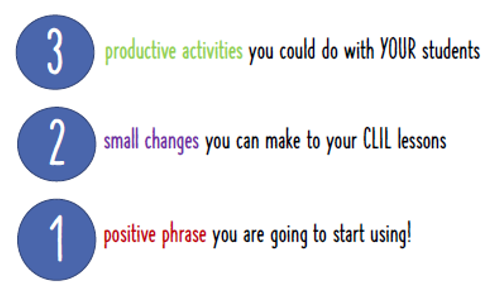
During the first session the participants in the course compared text book exercises in order to choose or improve the most suitable to reach our objectives, taking into account content, language used, and the students’ motivation.
In both sessions all Non-Linguistic Subjects were accounted for, providing a wide variety of activities, resources and online tools for each of them.
Drama and other creative activities were considered as a way of motivating students and make them take an active part on their learning.
Cross curricular activities played an important role in the development of both sessions, making the participants link their subject to the main topic that Harriet Thomson provided. Teachers also provided activities that fit in the lesson and connect the learning.
After the course, the participants have designed activities -even complete lesson plans- based on what they learnt from the speaker and their colleagues during the videoconferences. We are sharing these activities in the blog of the course: https://upgradingspeakingandwritinginclil.blogspot.com/
The teachers in this course have acknowledged its great quality and welcomed the enormous quantity of resources and ideas provided during the course and in the blog.
| Etiquetas: | idiomas inglés english formación innovación |
Se espearaba que llegaran a Santander y se presentó en A Coruña. Charles Howard, conde de Nottingham, gran almirante de Inglaterra, venía a España como embajador del rey Jacobo I Estuardo para ratificar la firma del Tratado de Londres que, el 28 de agosto de 1604, había puesto fin a la larga guerra entre ambas potencias. Y lo hizo con sus más de 600 acompañantes para los que hubo de proveer alojamiento, alimento y el apropiado agasajo a lo largo del camino.
Los profesores Berta Cano, de la Universidad de Valladolid y Mark Hutchings (Universidad de Reading, actualmente en la Universidad de Salamanca) compartieron con los profesores de los seis centros participantes de la Ruta de los Ingleses este interesantísimo viaje a través del tiempo y las costumbres de la época.
La documentación basada en fuentes inglesas nos proporciona la denominación alternativa que estos textos proporcionan a las localidades españolas.
Los textos proceden de fuentes oficiales y oficiosas, como el relato del "heraldo" Thomas Treswell, con interesantes apreciaciones sobre las localdiades, la provisión de alojamiento y comida a lo largo de la ruta y el recibimiento de autoridades.
Las autoridades españolas comandadas por el Conde de Villamediana también son una fuente documental muy interesante de la importancia que esta embajada tiene para ambos países no solo por la importancia de la ratificación del Tratado, sino por la imagen que España quería presentar del país ante el antiguo enemigo.
Este viaje tuvo resonancias y consecuencias en la literatura española e inglesa. Se sabe que el Quijote viajó a Inglaterra en el retorno de la embajada, y tuvo su reflejo literario en ambos países, como la sátira teatral de Monsieur D'Olive.
De gran interés es la descripción que se hace por parte del mencionado heraldo y también de un soldado acompañante de las localidades por las que pasan, del paisaje, de sus gentes y las calles de las localidades a su llegada.
Esta sesión formativa presenta muchos elementos de interés a nivel histórico, literario, geográfico e histórico, por no hablar de posibles elementos ficcionables a lo largo de estos 400km que serán incluidos en las actividades que los centros docentes siguen actualizando con sus alumnos a lo largo de este curso.
Seguimos comartiendo éste y todas las actividades diseñadas por los centros en este Seminario en el blog:
https://rutadelosingleses1605.blogspot.com/
| Etiquetas: | idiomas english lenguas formación |
Los profesores de Educación Plástica y Visual, Música y Tecnología de Secundaria que imparten su clase en Secciones Bilingües de inglés tienen la posibilidad de formarse en la metodología CLIL a través de los cursos presenciales y online ofrecidos anualmente por el Centro de Formación del Profesorado en Idiomas.
El Curso Boosting Skills for Arts, Music and Technology in Secondary Education está dirigido a esta última asignatura clave en la rama STEM, tan significativa y necesaria en la formación científico-tecnológica de los alumnos, y a las dos que mejor encarnan el desarrollo y la sensibilidad artística en Secundaria, Música y Expresión Plástica y Visual. Este curso ha sido diseñado y lo tutoriza una reconocida experta en CLIL, Mandy MacLoughlin.
Una tercera posibilidad de formación para estos profesores son los tres blogs que recogen anualmente las tendencias metodológicas, recursos, herramientas y actividades elaboradas a lo largo de los mencionados cursos.
CLIL for Arts in Secondary Education CyL
En estos blogs los profesores pueden consultar y revistar las presentaciones de los cursos online presenciales de convocatoriaanteriores como el llevado a cabo este curso por Donna Fields sobre Scaffolding en la metodología CLIL.
CLIL for Music in Secondary Education CyL
También pueden utilizar las actividades realizadas por los profesores participantes y tutora del curso online para todos los cursos de las tres asignaturas en Secundaria. Estas actividades tienen un extraordinario valor, puesto que están diseñadas por profesores que desarrollan su labor docente en nuestro mismo contexto educativo y comparten el mismo curriculo.
CLIL for Technology in Secondary Education CyL
| Etiquetas: | blogs formación inglés innovación idiomas english |


Today, after opening my Google engine and for the umpteenth time, I have asked myself about Google Doodles. This amazing gadget has been a source of knowledge pills.
Could it be a good activity for the students at home to design one related to the subject? Google welcomes them in: https://doodles.google.com/d4g/how-it-works/ and has created materials for the teachers:
https://doodles.google.com/d4g/educators/
Besides, it admits many different materials in their design, analogic too. So maybe there's hope for everyone! ;)
Here you can find some inspiration:
- History: https://cutt.ly/WtzCx89
- Maths: https://cutt.ly/OtzCpRf
- Technology: https://cutt.ly/BtzCYju
- Music: https://cutt.ly/UtzCOsY
- Arts: https://cutt.ly/StzCDZ8
- P.E: https://cutt.ly/ytz2Mqm
-Science: https://cutt.ly/stz20OQ
| Etiquetas: | idiomas inglés english formación |